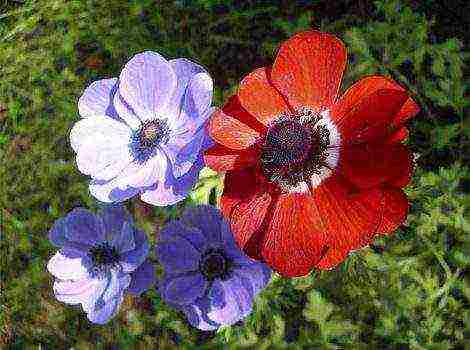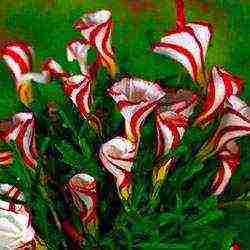Content [show]

Jasmine - a symbol of passion and love
Jasmine is a multi-stemmed shrub that can grow from 0.8 to 4 m in height, has whole green leaves and snow-white or creamy flowers with a sweet-refreshing scent.
For its unpretentiousness and abundant flowering, this shrub is also loved by gardeners, it can be found in almost every area.
Planting jasmine
In order for jasmine to quickly take root, grow well and bloom profusely, you need to choose the right place and prepare the soil.
Seat selection
Any area can be selected for jasmine; it also grows on the north side in the shade. It is a shade-tolerant plant, but in a sunny place it will grow faster and bloom more profusely.
When choosing a site, it is important to remember that the shrub does not like a close approach and stagnant groundwater.
Planting timing
The ideal time for planting this shrub is early spring or autumn, since during this period the seedlings do not have time to open their buds. Gardeners for planting jasmine are advised to choose October.
Soil preparation
Jasmine can grow in any soil, but prefers fertile soil. Before planting a shrub, you need to dig up the ground well, make a hole about 50 cm deep and add nitrophosphate at the rate of 30 grams per 1 seedling.
Experienced gardeners advise planting jasmine in a high area and prepare drainage from sand, gravel, gravel and bricks.
How to plant jasmine correctly?
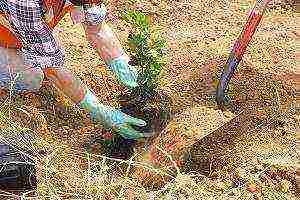
The soil for planting jasmine must be fertile, therefore drainage must be prepared
When the soil and planting hole are ready, you can place a seedling in it. Make sure that the distance from the roots to the walls of the hole is about 10 cm.
Sprinkle soil on the root system of the seedling, the root collar can be deepened by 3 cm, but not more.
Water the jasmine liberally after planting. If everything is done correctly, then the seedling will quickly take root in a new place.
Reproduction
Jasmine reproduces in several ways: by layering, dividing the bush, cuttings and seeds.
Seeds jasmine is sown outdoors at any time of the year, including in winter. For winter sowing, you need to choose calm weather with a temperature of at least -10 ° C. For this, beds with a depth of 30 cm are prepared in the snow and seeds are placed in them, then they are covered with large branches and straw. In the spring, the shelter must be removed, and the seedlings must be protected from direct sunlight.
If for breeding selected cuttings, they need to be prepared in advance in the fall, stored all winter in the basement, and planted in the soil in early spring. As soon as the cuttings begin to grow, they are spudded to accelerate the growth of the root system.
To form layering, young shoots are taken in early spring. To do this, they are laid in beds and lightly sprinkled with earth. As soon as new shoots appear on them, the layers are spud. In the fall, they need to be separated from the main bush.
The most common and easiest way to propagate jasmine is dividing a bush... To do this, you need to dig out the root system and carefully divide it so as not to injure the plant. Plant the resulting parts in several places on the site.
Learn how to plant and care for Korean fir here.
Read about lilac in landscape design and the choice of its variety in the article
In order for jasmine to decorate the garden area and delight with abundant flowering, you need to follow several rules of care:
- Every week, loosen the soil around the bushes and remove weeds.
- Use mineral and organic fertilizers.
- Regularly engage in the formation of a bush, give it the correct shape by pinching the tops.
Watering
Jasmine needs abundant watering, especially during dry times.
Do not allow the soil to dry out! If jasmine lacks moisture, its leaves lose their turgor and turn yellow.
For 1 sq.m. the soil around the shrub will need about 30 liters of water.
Top dressing
The first feeding can be done only one year after planting. This shrub will need organic and mineral fertilizers.
To prepare a mineral fertilizer, stir 30 g of superphosphate and 15 g of potassium sulphide and urea in 1 bucket of water. This amount is enough for feeding 1-2 bushes.
As an organic fertilizer, you can use slurry, which is diluted with water in a ratio of 1:10.
Preparing for winter
Jasmine is not afraid of low temperatures, so it does not need additional preparation for winter. But if the plant is not one year old, it needs to be covered with light-colored material and tied with a rope.
Pruning
In order for the plant to have a neat appearance, it must be constantly pruned. Cosmetic and sanitary pruning is done annually.
Gardeners thin out bushes, remove dried flowers and excess shoots.
It's also important not to forget about anti-aging pruning. In the spring, 4-5 trunks are cut to 0.5 m, the rest of the shoots are removed to the ground.
To prevent fungal diseases, the cuts are treated with garden pitch.

Jasmine is grown as a hedge
Disease and pest control
Jasmine must be protected from thrips, aphids, spider mites, weevils, mealybugs and soft scabbard. As soon as traces of these pests appear, you need to spray the shrub with garden insecticides.
In some cases, folk remedies help (ash, soap solution, etc.).
This article will help you choose the right shrubs for your hedge.
Read about fast-growing trees and their use in landscape design here
Find out about the most popular lawns and their planting here.
Jasmine varieties
Common garden forms of jasmine include:
- Jasmine ordinary, coronal. It is a large shrub that grows up to 3 meters in height, the flowers are white or creamy, and have a strong odor.
- Small-leaved jasmine... A small shrub with semi-double or double flowers. This species is placed in the foreground of the site; it can often be found next to verandas, paths, benches and gates.
- Jasmine fluffy... It grows in the form of a shrub or a small tree, reaching a height of 4 meters. The flowers are creamy, with a slight scent.
As a result of crossing these three species, it was possible to obtain several varieties of jasmine: "Efironos", "Glacier", "Alabaster", "Ermine mantle", "Airborne landing", "Sambakam".
An image of jasmine varieties can be seen in the gallery:
Application in landscape design
It is used as a specimen plant and for large mixborders. Dwarf varieties look great in rock gardens and rocky gardens, they are used as edging and borders for flower beds.
Jasmine goes well with hydrangeas, lilacs, weigela. Also, designers combine several varieties of this shrub with each other, making hedges out of them.
Jasmine is a luxurious shrub that will adorn any garden plot.
It looks great in compositions with other plants, forms reliable hedges and decorates a wall of a house, a bench or a gate. In order for the shrub to please with abundant flowering and rich foliage color, you need to choose the right place for it and remember the rules of care.
Jul 14, 2015Elena Tymoshchuk
Probably, almost everyone knows what garden jasmine looks like, and what it is. This plant grows a very large number of flower growers as an indoor plant. However, it is quite possible to grow it outdoors. Many gardeners are happy to grow such a spectacular flower on their site. The jasmine bush can be easily confused with the chubushnik, and although these plants need almost the same care, they differ in appearance, and also have significant differences in their origin. So, jasmine can be easily distinguished by fragrant inflorescences, which are quite large.
However, in order to grow a spectacular and strong plant, you need to know how to plant it correctly in spring, and you also need to know the rules for caring for garden jasmine. This kind of jasmine is a very beautiful plant, especially during flowering, when fragrant flowers are blooming. But he needs good care as well as a proper fit.
Features of garden jasmine

It is quite possible to grow a plant such as garden jasmine in absolutely any area, but it should be remembered that it requires special care. Before you start growing this flower, you should first find out all the details about the care it needs. However, you should first learn about this kind of jasmine better.
A native garden jasmine from the Mediterranean. This plant has medicinal properties. However, most often it is grown as decorative for decorating summer cottages and garden plots. This shrub has a very spectacular lush crown. It is most beautiful during the flowering period, when yellow or white flowers bloom on the branches, collected in inflorescences. They are incredibly scented. Garden jasmine has a large number of different subspecies, which differ from each other in the size of the flowers. These plants are distinguished by the fact that they are able to adapt to almost any weather conditions.
Garden jasmine is quite undemanding to the planting site. So, it grows and develops very well both in a sunny and shady place. It can be planted both on the southern and northern sides of the site. It tolerates both drought and high humidity quite well. Various insects, including most types of bees, love to collect nectar from the jasmine bush.
The uniqueness of garden jasmine

During the flowering period, there is a large amount of essential oils in the flowers, but only in those that have blossomed quite recently. They have a beneficial effect on human well-being. Benzyl alcohol and jasmine benzyl acetate are able to normalize a person's sexual libido. The buds of such a plant are used to make a special decoction that has the ability to normalize the work of the digestive system. Also, the substances contained in garden jasmine can cleanse the body of toxins, as well as strengthen the immune system. In any of the varieties of such jasmine, there are substances with medicinal properties. The jasmine bush will not only become a great decoration for your site, but can also significantly improve your health.
In order for the cultivation to be successful, you need to know at what time and how exactly to plant a given flower in open ground.
Main types with photos
Some species are most popular with gardeners and summer residents.
Small-leaved jasmine

This is a fairly compact shrub, which almost never reaches more than 100 centimeters in height. Such a plant has large and curved leaf plates. His flowers have a very pleasant smell, reminiscent of strawberries.
Common jasmine corona
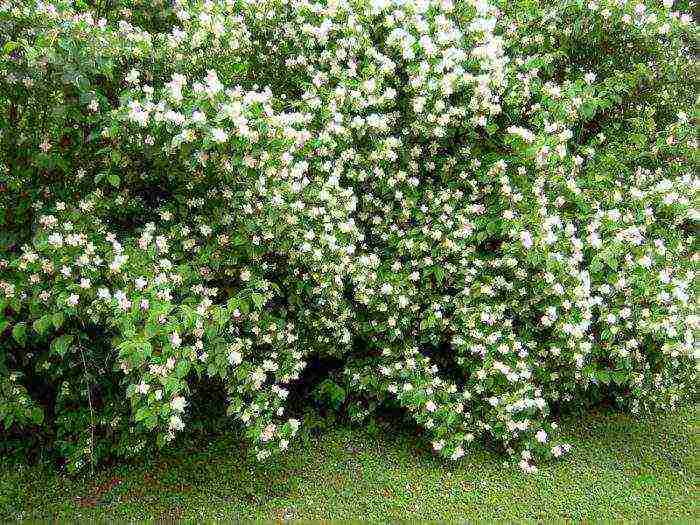
The shrub is quite large. So, it can reach a height of 250 to 300 centimeters. During the flowering period, such a jasmine bush is decorated with very large and beautiful inflorescences that exude a pleasant sweetish smell. The leaf plates are painted in a deep golden color.
Jasmine fluffy
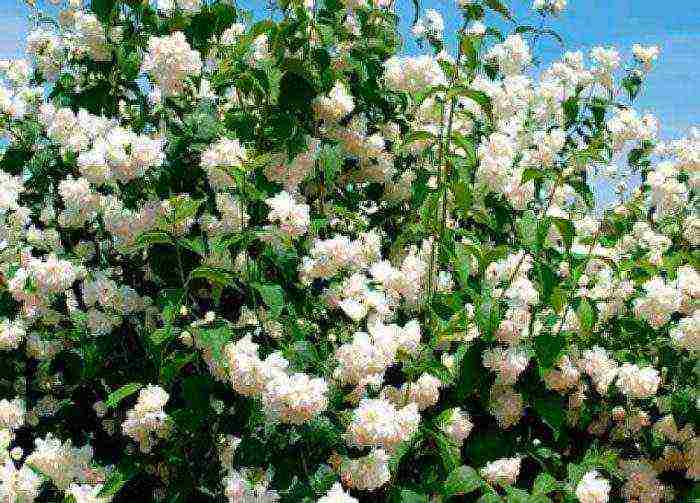
It is recommended to grow such a plant in parks or in fairly large areas. The bush can grow up to 400 centimeters in height, and it is the tallest plant of all types of jasmine. However, the peculiarity of this plant is also that its lovely flowers do not have a scent. This species blooms late enough. Flowering lasts for 4 weeks.
The Gornostaeva Mantya jasmine variety is also very popular. This plant is quite compact and its height does not exceed 100 centimeters. Inflorescences are located along the entire length of the branches. Flowering lasts about 8 weeks.
Choosing a suitable landing site

These species and varieties can be found in many garden and suburban areas. As a rule, garden jasmine is planted outdoors in spring. In order for a plant to grow and develop normally, it is necessary to know several important rules for both planting and caring for it. As a rule, the planting of various types and varieties of garden jasmine is practically no different.
The main points in choosing a suitable landing site:
- When choosing a suitable place for a given plant on the site, be sure to take into account the fact that it can adapt to almost any weather conditions. However, if you want your plant to have a spectacular appearance and bloom very profusely, then it should be planted in a place that is protected from strong drafts. The fact is that they have an extremely negative effect on this shrub. Also, garden jasmine grows and develops best in a well-lit place with sufficient direct sunlight.
- This shrub is recommended to be planted in close proximity to flowers that have a purple or deep blue color. For example, it will look great next to a delphinium or lavender. Jasmine also grows well next to hydrangea or spirea.
- Experts advise planting garden jasmine in the spring. However, this procedure can be carried out in the fall.
Optimal soil selection and planting
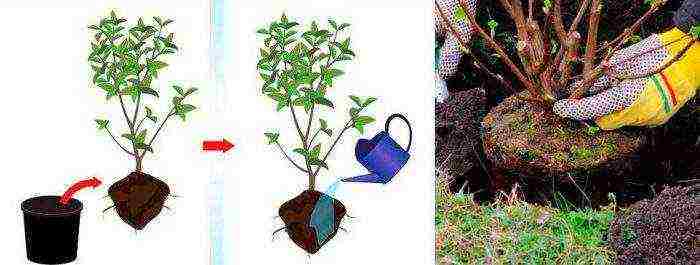
Garden jasmine, as mentioned above, is a fairly unpretentious plant. But for its better growth, it should be more carefully attributed to the choice of soil, as well as to its direct planting.
- In view of its unpretentiousness, such a shrub is able to take root and grow well on almost any soil. However, if possible, preference should be given to soil saturated with nutrients. It should be remembered that jasmine roots react extremely negatively to excessive humidity, so the choice should be left on a piece of land located on a not very high elevation.
- Pour sand mixed with small stones into the hole prepared for planting. This layer will act as drainage. When planting a plant in spring, it is recommended to pour nitrophosphate in an amount of 50 grams into the hole. This will allow the plant to quickly take root in a new place.
- When the bush is planted, the soil will need to be tamped a little. Then the jasmine must be watered.
- In order for the plant to develop correctly, it is necessary to systematically apply fertilizers to the soil.
Feeding rules

In order for your site to be decorated with a lush jasmine bush, you not only need to take care of it regularly, but also systematically apply fertilizer to the soil. It should be remembered that the very first feeding should be carried out only 12 months after planting the plant in open ground.
Garden jasmine needs minerals. To feed the plant, it is recommended to use a nutrient solution consisting of 1 liter of water and 5 grams of superphosphate. Add another 2.5 grams of urea and potassium sulfide to the resulting solution. After that, the solution is thoroughly mixed. It is used to fertilize this shrub.
Garden jasmine also needs organic fertilizers. So, for feeding, it is recommended to use manure, as well as humus. But at the same time, it should be remembered that manure for feeding should be used only in a diluted form, otherwise the plant's root system may burn out. It is recommended to dissolve manure in water in a ratio of 1:15.
Pruning features

In order for the jasmine bush to be lush and fragrant, dressing alone is not enough, it still needs to be properly looked after.
In order for the crown to always look well-groomed and effective, regular formative pruning should be carried out. Both summer residents and gardeners have several secrets and rules regarding this procedure:
- formative pruning must be carried out in spring, when the shrub is in a vegetative state;
- the longest branches must be cut off completely, and the short ones must be shortened by ½ part;
- for more abundant flowering, rejuvenating pruning is carried out, or rather, all empty branches are removed;
- in an adult bush, the central trunk must be cut to 45-50 centimeters, while the rest are removed entirely.
Every year, it is imperative to inspect the shrub and remove damaged as well as diseased branches.
Preparation for wintering

In order for the plant not to die in the winter, it must be properly prepared for this difficult period. To do this, you should perform a few very simple manipulations:
- It should be remembered that adult specimens are more frost-hardy than young ones. Therefore, adult plants may well not be prepared for the winter period. However, this procedure is needed by those jasmines that are still quite young.
- When the shrub has faded, it should be wrapped in a specially designed material. You can also use regular straw for this purpose.
- So that during the winter cold the roots of jasmine do not suffer, in the autumn time you need to dig up the soil around the trunk and do not forget to add compost to it.
- If desired, in the spring, this shrub can be transplanted to a new place.
Transplant features
Garden jasmine is transplanted in the spring. To do this, you need to prepare the soil by digging a hole in it, which in size should correspond to the volume of the root system of the shrub. The plant is transplanted into this hole, while the rules are similar to those that apply to planting such a shrub in the spring.
Reproduction methods
It is very easy to propagate garden jasmine. So, there are several ways:
- Seeds. Seeds are sown both in open ground and in a box at home (growing through seedlings).
- Cuttings. Cutting cuttings is recommended in the first days of June. They are then planted either in open soil or in a greenhouse.
- Shoots. In springtime, the shoots should be prepared by separating them from the mother plant. The choice should be stopped on the strongest shoots. After they overwinter, with the onset of the spring period, they are transplanted to a permanent place.
- Division of the root system. This is not the most popular breeding method. The division is recommended in the autumn.
Also, be sure to remember that indoor and garden jasmine are different crops, and each of them requires special care.
We will tell you the rules for planting and caring for a chubushnik in the open field. We describe in detail when and how best to plant garden jasmine.
We consider caring for a plant in the garden: watering, feeding, pruning, flowering, preparing for winter, as well as diseases and pests.
How is it correct: mock orange or garden jasmine?
Chubushnik belongs to the Hortensia family, and jasmine belongs to the Olive family. At the same time, the shrubs are quite similar to each other, especially with a sweet and strong aroma, which is why confusion arises.
In Russia and the CIS countries, chubushnik is often called garden jasmine, but real jasmine is a thermophilic plant (subtropical zone) and freezes in harsh climates. Some of its species are successfully grown here at home or in greenhouses (Indian, sambac, etc.).
Our planting guidelines and outdoor care tips are for the chubushnik or the popular “garden jasmine”.
- These names are used in the article as synonyms, since under these names one and the same plant is hidden.
In Russian gardens, most often cultivated mock-orange (ordinary), virginal, hybrid winter-hardy varieties of Lemoine mock-orange and Vekhov Nikolai Kuzmich's selection.
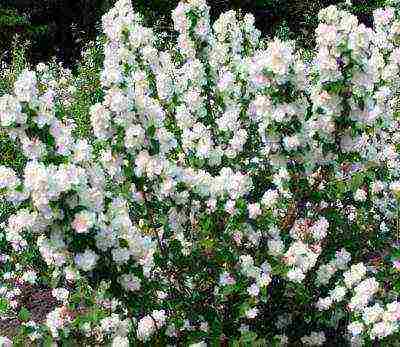 Chubushnik "Snow storm"
Chubushnik "Snow storm"
Chubushnik: planting in open ground
For the excellent development and flowering of the plant, the planting site, soil and soil mixture, planting distance and depth play an important role.
This is a kind of foundation that provides comfortable conditions for growing chubushnik in the open field for the next 25-35 years.
Pick-up location
The plant is best suited to a quiet place that should be well lit, especially in the first half of the day, but light partial shade at noon is also allowed. It is best to plant chubushnik on the south, south-east and south-west side.
Garden jasmine is able to grow in the shade, but in this case the flowering will be much weaker, it will stretch out and acquire a less beautiful appearance.
Do not plant shrubs in places where rain or melt water accumulates, as well as where groundwater is closer than 150 cm from the surface of the earth.
Soil and acidity
Chubushnik loves fertile land with high air and moisture permeability. It is well suited to light and medium loamy soils rich in humus. At the same time, garden jasmine is able to grow in poor soil, but then the development and flowering of the bush will be weaker.
Heavy clayey soils are poorly suited; in this case, more powerful drainage and a lighter soil mixture are needed. On sandy loam soils, on the contrary, you can do without drainage, and it is better to replace part of the sand with garden soil.
The optimum level of soil acidity for mock-orange is pH 6.5-7.5 (close to neutral).
Soil mix
Substrate options for garden jasmine.
- Leafy land, humus, sod (garden) land, peat in equal parts is a universal option.
- Sod (garden) soil, humus (compost) and sand - 3: 2: 1. Well suited for clay soils and chernozem.
- Humus, black soil - 1: 1. Preferred for sandy soils.
- It is advisable to add one glass of wood ash or two tablespoons of superphosphate to any soil substrate.
Landing distance
Large shrubs and trees - 2.5-3 m
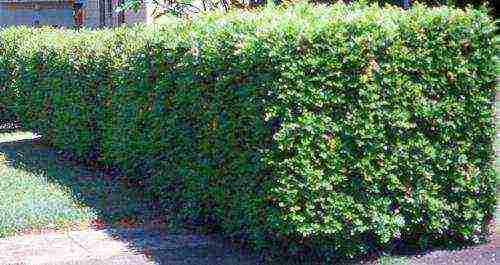 Chubushnik hedge
Chubushnik hedge
Planting depth
When planting, the root collar of the seedling should be approximately at ground level. The maximum depth is 2-3 cm, otherwise there is a high risk of developing rot.
How to plant garden jasmine correctly? Instructions
- Dig a planting hole: depth and width - 50-60 cm. At the bottom of the hole, make a 10-15 cm drainage layer of rubble, gravel or sand.
- Sprinkle in some potting mix.Place the seedling in the center of the hole so that the base of the bush is about level with the ground.
- Gradually fill the planting hole with soil mixture and compact it so that there are no voids.
- Trim all shoots about 30% of their length (a couple of buds to a strong bud). Pour 10-15 liters of water into the tree trunk circle. Pour a 3-4 cm layer of peat, bark or sawdust on top to keep the root ball moist longer.
Rules and Tips
- Plant a chubushnik in cloudy weather or in the evening so that it takes root better.
- It is advisable to dig the planting hole and fill it with soil mixture 3-4 weeks before planting.
- If the seedling has damaged roots, remove them and treat the cut with charcoal powder.
When is it better to plant a mock-orange in spring or autumn?
Garden jasmine is best planted in spring (April) or autumn (September - October).
A seedling with an open root system can be planted only in the spring before the leaves bloom, otherwise it will die, and in the fall from September 10 to October 15. Seedlings in containers can be planted throughout the growing season.
These dates for planting a mock-orange are also suitable for gardeners of the Moscow region, the Leningrad region, the Urals and Siberia.
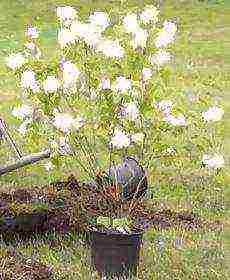 Chubushnik sapling in a container for planting in open ground
Chubushnik sapling in a container for planting in open ground
Chubushnik transplant
The garden jasmine shrub is relatively easy to transplant at any age. The optimal time for transplanting adult bushes is from late August to mid-October, but it is also possible in spring in April.
- Water the chubushnik abundantly the day before digging so that it is easier to transfer it with a clod of earth, and it will stock up on nutrients.
- Cut off young shoots of the current year (autumn) or last year by 30-40% (spring).
- Carefully dig out the bush, plant it together with a lump of earth in a new place and pour 10-15 liters of water.
Chubushnik: outdoor care in spring, summer and autumn
The shrub is quite unpretentious to care for, drought-resistant and hardy to unfavorable external factors.
However, to get the maximum decorative effect, garden jasmine must be properly cared for.
Watering
Moisture is of great importance for a chubushnik. With its lack, the bush may not bloom. Water your garden jasmine regularly, especially in hot and dry weather, to prevent the leaves from drooping (loss of turgor).
The maximum demand for moisture is from April to July, when the bush is actively growing, preparing for flowering and blooming. During this time, water approximately every 7-12 days with 15-30 liters of water.
We recommend reading: «WHAT WATER IS BETTER TO WATER PLANTS?»
In the spring, before flowering, it is advisable to spray the shrub with warm and soft water. For young plants, it is useful to add growth stimulants to the water ("Zircon", "Epin Extra" and others).
After the first watering in the spring, mulch the near-stem circle with a 3-4 cm layer of peat to retain moisture in the soil.
Loosening the soil
During the spring - summer, it is necessary to loosen the ground 2-4 times by 4-6 cm in depth. Also remove weeds in a timely manner - they take away macro- and microelements from the chubushnik.
Top dressing and fertilizers
For the first two years after planting, there is no need to feed the chubushnik with mineral fertilizers. Garden jasmine needs additional nutrients for abundant and lush flowering.
- In early April (before the leaves bloom), dissolve 15 grams of carbamide (urea), 15 grams of potassium sulfate and 30 grams of superphosphate in 10 liters of water and pour over the bush. Or water the plant with mullein infusion - 1:10.
- After 3-4 weeks (beginning - mid-May), repeat the feeding.
- Immediately after flowering, scatter 20-25 grams of superphosphate (1 tablespoon) and 10-15 grams of potassium sulfate per 1 m2 over the surface of the earth.
2nd option
- Before flowering (late April - early May), scatter two tablespoons of nitrophoska and a glass of wood ash over the surface.
- During flowering and immediately after it, pour the solution: for 10 liters of water, 20-25 grams of superphosphate (1 tbsp. Spoon) and 10-15 grams of potassium.
Tips
Instead of mineral fertilizers during and after flowering, wood ash can be used. To do this, pour a glass of ash with 10 liters of water and leave for two days, and then pour the shrub into the trunk circle.
Bloom
Garden jasmine is most attractive when fragrant flowers open up. It is for its pleasant, sweetish and powerful aroma that most flower growers love it.
The smell of chubushnik has a beneficial effect on the human psyche and raises the mood. The plant usually blooms in the 3rd year after planting.
Blossoming time of the chubushnik
The flowering period of garden jasmine depends on its type and variety. In the conditions of the Moscow region, the crown mock-orange and garden forms based on it are the first to bloom: golden (aureus), dwarf and variegated. They bloom almost immediately after common lilac (the beginning of June).
In the first two weeks of June, the small-leaved, thin-leaved mock-orange, Shrenka, blooms. In early - mid-July, odorless, grayish, broad-leaved and fluffy mock-orange begins to bloom (it blooms later than everyone else).
The duration of flowering is on average 20-25 days, in a shady place a little longer. Schrenk's mock-orange blooms the longest, and, for example, Gordon's mock-orange is able to bloom a second time in the fall.
 Chubushnik "Zoya Kosmodemyanskaya"
Chubushnik "Zoya Kosmodemyanskaya"
Why is the mock-orange not blooming? What to do?
Garden jasmine may not bloom in some situations. The most common reasons: lack of light (grows in the shade), lack of moisture or nutrients (watering, feeding), unsuccessful wintering (freezing of annual shoots), excessive pruning in the spring or too deep planting.
Perhaps the mock orange does not bloom due to its age, especially if you grew it from seeds (7-8th year) or from cuttings (4-5th year).
Correct pruning of chubushnik: in spring, after flowering, in autumn
Garden jasmine needs annual pruning to form a decorative crown shape, especially vigorous species and varieties. Otherwise, it will thicken with young shoots and grow ugly.
Sanitary pruning in spring
Before the buds awaken (late March - early April), remove weak and damaged shoots growing inside the bush. If you wish, you can shorten some of the strongest branches, but proceed with caution as over-pruning can result in no flowering this year.
Sanitary pruning can be done at any time of the year. Complete formation of the crown of the bush will be performed after the mock-orange has faded.
Anti-aging pruning
About once every 2-4 years, it is necessary to rejuvenate the plant. In the early vein at the garden jasmine, cut off all shoots older than 10-12 years old at the very base of the bush ("on a stump").
Due to this pruning, the crown of the garden jasmine will rejuvenate and stimulate powerful flowering and growth. New strong shoots will bloom next summer.
"Refreshing" an old bush
A very old or neglected bush is easier to rejuvenate by cardinal pruning.
- At the end of April, cut down all the trunks at ground level, and cut 3-4 of the healthiest ones at a height of 35-40 cm. Treat the cuts with garden pitch, and spread a 4-5 cm layer of humus around the bush and dig a little soil (6-8 cm) ...
- Water the mock-orange regularly and abundantly in the summer. It is also advisable to feed the mullein infusion 1-2 times.
- In the fall, new shoots from dormant buds will appear, but in the spring you will need to leave 3-4 of the strongest ones, and completely remove the rest. These most developed shoots are the basis of a young shrub.
Formative pruning of chubushnik after flowering
Formative pruning of garden jasmine is best done immediately after flowering (mid-June) so as not to disturb flowering, as it blooms on last year's shoots.
- First, remove any faded buds. If pruning was not done in the spring or there is a need, then completely remove all weak and damaged branches.
- Then trim the shoots of the current year to last year's growth (green section of the branch to the lignified part).
By October, a new growth with lateral shoots will have time to appear on these branches, on which flowers will appear next spring.
If you want to reduce the height of the bush, then cut off all or the longest shoots below the growth zone. - Also prune 4-5 year old shoots growing inward and bare, weakly flowering, to thin it out. And if the bush is very thick, then cut off 20-25% of the old trunks at the base.
Pruning chubushnik in autumn
You cannot prune young shoots of garden jasmine in the fall if you want it to bloom next year. In autumn, if necessary, you can carry out sanitary pruning and thinning of the bush (growing inward and weak shoots).
Preparing for the winter chubushnik
Most varieties of the plant are distinguished by good winter hardiness, especially of domestic selection. Adult chubushnik bushes do not need winter shelter, and it is advisable to mulch specimens up to 2 years old with a 4-5 cm layer of peat or pine needles.
If the tops of annual shoots freeze in an adult garden jasmine in winter, it will still bloom, and by pruning in the spring it is easy to restore the crown of the bush.
In the conditions of the Moscow region, the Leningrad region, Siberia and the Urals, it is better to plant winter-hardy varieties.
Pests and diseases
Chubushnik is rarely affected by pests or diseases, but it is important to regularly inspect the shrub for their presence.
The most common pests: weevil, mealybug, spider mite, aphid, scale insect and false scale insect... Aphids are especially common on young overgrowth leaves.
Interesting to know
You can make honey from the nectar of the chubushnik. This honey improves sleep, helps relieve fatigue and headaches.
The plant got its name due to the peculiarity of the structure of the stems from which the mouthpieces and shafts for a smoking pipe were made.
ADDITIONS TO THE ARTICLE:
1. HOW BETTER TO REPRODUCT THE CHUBUSHNIK? + VIDEO
2. POPULAR VARIETIES OF CHUBUSHNIK WITH PHOTOS - REVIEW!
3. HOW TO CARE FOR JASMINE IN HOME CONDITIONS?
We wish you a successful planting, easy care of the chubushnik in the garden, and enjoy its wonderful flowering!
Probably, many in their lives have heard about jasmine. Basically, this flower decorates the home windowsills of apartments and houses. But this shrub loves to grow in the wild. In particular, many gardeners grow it on their plots. It happens that some people confuse jasmine and chubushnik. Plant care is the same, but there are differences in appearance and origin. In the first, the flowers are much larger and more fragrant. So, let's look at how to plant jasmine in the spring, and also learn all the intricacies of caring for it.
Briefly about the main
First, let's take a closer look at the information on jasmine. This shrub came to us from Mediterranean countries. Grown for decoration and also for medicinal purposes. A bush grows with a large branched crown. It blooms very beautifully with white or yellow flowers. They have a pungent but pleasant and sweet scent. Today, there are many subspecies of this plant, so the shape and size of the buds depend on it. The plant is easy to care for and adapts to any weather conditions. It gets along easily in the shade or in the sun, in the south or north. The plant is able to withstand severe drought and heavy rainfall. This flowering shrub is loved by bees. They collect pollen and nectar from the buds. Jasmine has its own unique characteristics that you should be aware of too.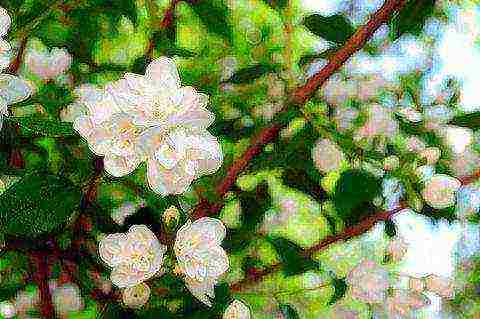
What is special about jasmine?
As soon as fresh buds open, a large amount of essential oil is formed in them. It has a beneficial effect on a person's libido. The main parts of essential oil, such as benzyl acetate, benzene alcohol, jasmon and other ingredients, have one main feature - they restore sexual function in the human body.Jasmine flowers can be used to prepare a decoction to help you restore digestive function. Also, it can easily remove toxins and improve blood circulation. Here is such, at first glance, an ordinary flowering bush, but hides in itself many useful functions. Regardless of which varieties of jasmine decorate your site, they all have healing properties. By planting such a shrub in the country, you will receive a unique decoration that will guard your health. It is worth analyzing how to plant jasmine in the spring and why it should be done at this particular time of year. But first, it is worth considering the available varieties of this magnificent flowering shrub.
Jasmine varieties
On your site, you can grow the following types of shrubs:
- Small-leaved. The shrub grows small. Its height reaches only 1 m. The branches are large, curved, with double leaves. The flowers have a pronounced strawberry aroma.
- Coronal ordinary. It is a large shrub species. Its height can reach three meters. White large flowers have a sweet aroma. It will delight you with its beauty from the beginning of June. The leaves are green with a yellow-golden color.
- Fluffy. Ideal for large areas or city parks. Among all the representatives of jasmine, this one is the highest. Its length can be up to 4 meters. Has no smell at all. Also this variety is the latest. It can bloom for a month.
- Gornostaeva mantle. This bush does not even reach one meter in height. Flowers are located along the entire length of the branches and can delight you for two long months.
These varieties are considered the most popular. They are in great demand. You can choose a plant for every taste. Everything will depend on your preferences.
Correct planting of jasmine
In order for the shrub to grow well, you need to plant it correctly and continue to provide constant care. All jasmine varieties are planted in the same way. Let's take a look at what is needed for the favorable growth of the shrub.
- You need to choose the right place. Since jasmine is an unpretentious plant, it will take root anywhere. The main thing is that there are no strong drafts. They interfere with the growth of the bush in the first 2 years of its life. It is better if you choose a sunny place for it, then the jasmine will fragrant and bloom to your joy.
- The plant will look good in a flower bed next to blue and purple flowers, such as delphiniums or lavender.
- Jasmine gets along well with neighbors such as hydrangea or spirea.
- It can be planted only in autumn or spring.
We are interested in planting jasmine in spring. Let's take a closer look at this issue.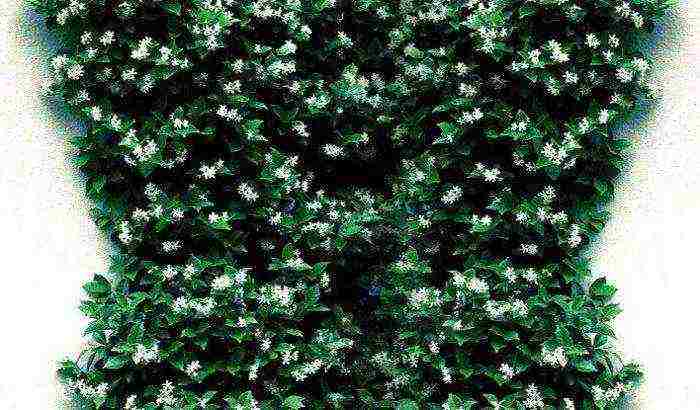
What kind of soil should be?
As we said earlier, jasmine is an unpretentious plant, so it has no special preferences in the soil. But it is better if the land is fertile. Jasmine roots do not tolerate excessive moisture. Better to plant the plant in higher elevations. Before planting, it is worthwhile to provide drainage, which will consist of sand and small stones. In order for the jasmine planting in spring to be successful, about 50 grams of nitrophoska should be added to the hole. Once the shrub is planted, the soil should be well tamped and spilled with water. Now you should carry out constant fertilization of jasmine.
Fertilization rules
We have figured out how to plant jasmine in spring. Now let's pay attention to plant feeding. There are some tips here:
Advice 1. The first fertilization should be done only one year after planting the plant in open ground.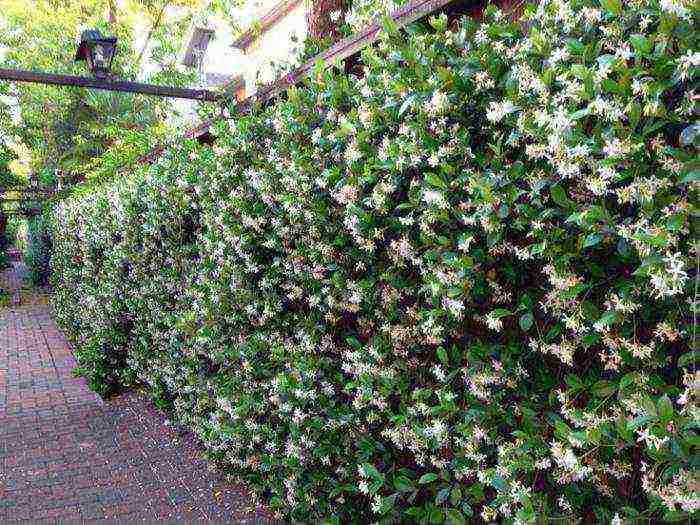
Advice 2. Jasmine should receive mineral fertilizers. One of these is prepared according to the following recipe: in 10 liters of water, you need to stir 50 grams of superphosphate, 25 grams of urea, 25 grams of potassium sulphide. The fertilizer is thoroughly mixed and the bush is watered with it.
Council 3. Jasmine should receive in the right amount and organic fertilizers. These include manure or humus.One rule should be observed here: so that the roots of the plant do not burn, the manure is diluted with water in a ratio of 1:15.
Following such simple advice, you will get a plant of amazing beauty in your garden, which will delight you with its pleasant aroma. Now we know not only how to plant jasmine in spring, but also how to fertilize it correctly. But this does not end with caring for the plant.
The rules for the formation of a crown in a shrub
How to prune jasmine in spring, every owner of this wonderful plant should know. In order for the bush to have a beautiful and well-groomed appearance, you need to form the correct crown.
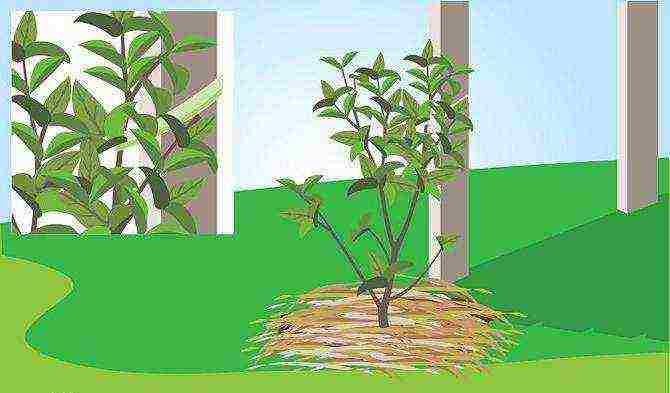
It is worth familiarizing yourself with some basic rules for pruning:
- It is worth pruning in the spring when the plant is in the growing season. Long branches are removed completely, short ones - half.
- To keep the branches always filled with flowers, it is worthwhile to carry out anti-aging pruning. All unnecessary and empty branches are removed.
- In an adult shrub, the main trunks should be shortened to 50 cm, the rest completely.
- Every year, be sure to sanitize the bush, in which you remove excess and diseased branches.
Having figured out how to prune jasmine in the spring, you should learn how to cook it for winter.
Wintering
Home jasmine needs the same care as outdoor jasmine. However, the latter needs to be constantly, every year, prepared for winter. If this is not done, the plant may die from low temperatures.
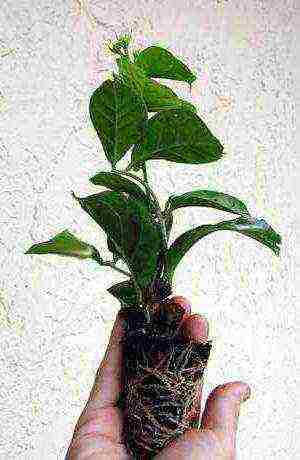
To prevent this from happening, it is worth following some recommendations:
- Adult seedlings tolerate the cold season better and do not require additional preparation.
- The same cannot be said for young bushes. After the jasmine has bloomed, it is covered with special material or straw. So the plant will tolerate the harsh winter well.
- To preserve the roots of jasmine, before wintering, the soil near the trunk of the plant is dug up with the addition of compost.
If, after a long winter, you decide that the jasmine needs to grow elsewhere, then you can arrange for him to move.
Jasmine transplant
Jasmine is transplanted in spring. To do this, in a new place, prepare the soil in a known way and plant a bush. You need to dig a hole the size of the plant's root system. Everything else must be done in accordance with all the rules and advice. You can also propagate the plant yourself. There are several ways to do this.
Reproduction
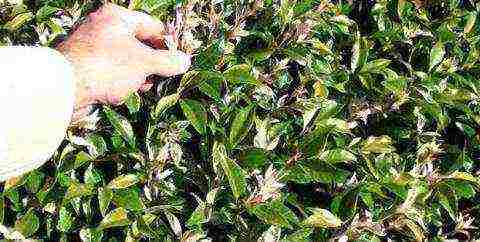
Jasmine is a plant that can be bred on its site. This can be done in several ways:
- Seeds. They can be planted directly into open ground or by seedlings.
- Cuttings. They are harvested in June. Then they are planted in a greenhouse or directly into open ground.
- Shoots. In the spring, they begin to prepare shoots. They are cut from the main trunk. The strongest escape is chosen. They let him spend the winter, and next year they put him in the place allotted for him.
- By dividing the root system. This method is rarely used. This method is used only when they want to quickly grow another jasmine bush. This method is appropriate only in the fall.
In this article, we looked at how to plant jasmine in the spring. Use this information as a desk guide and you should be able to grow a jasmine garden. The main thing is not to confuse absolutely two different plants - home and garden jasmine. They are absolutely different from each other and require a different approach to themselves. Remember, jasmine is not only beautiful, but also healthy. Do you want to improve your health? Then you just have to get this wonderful plant on your site.
